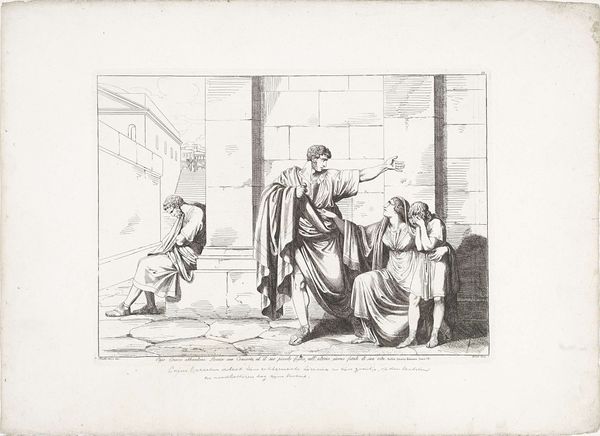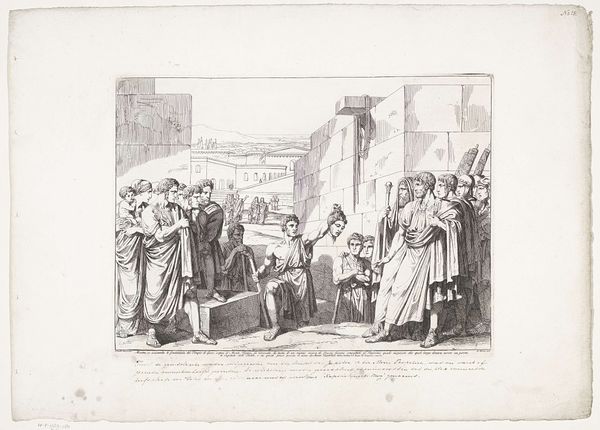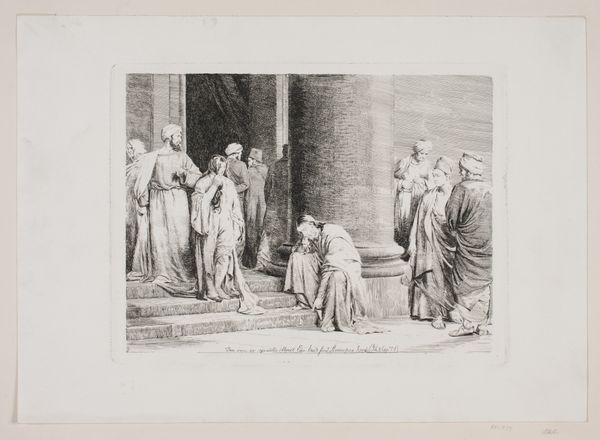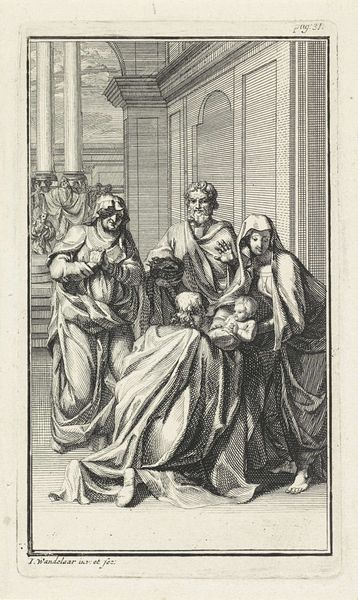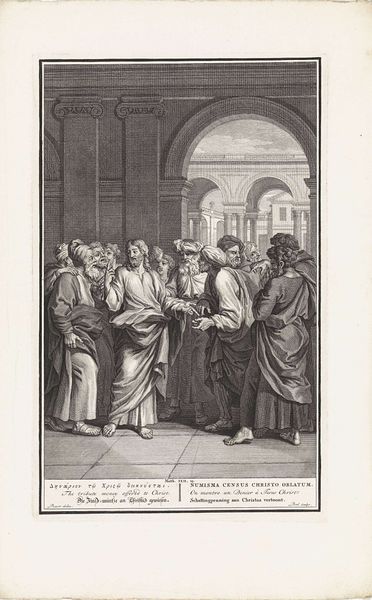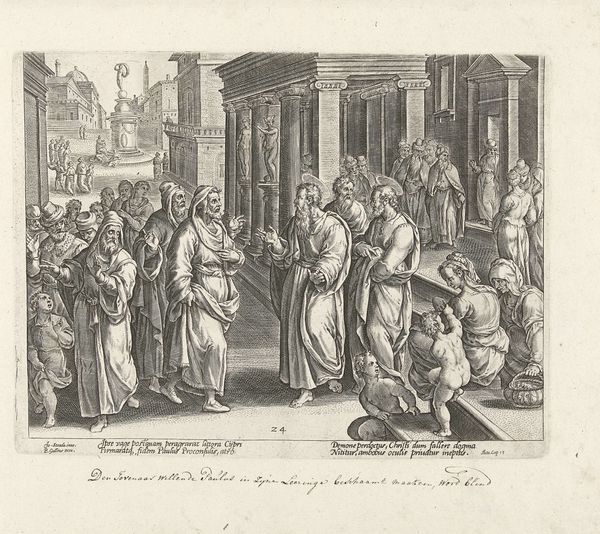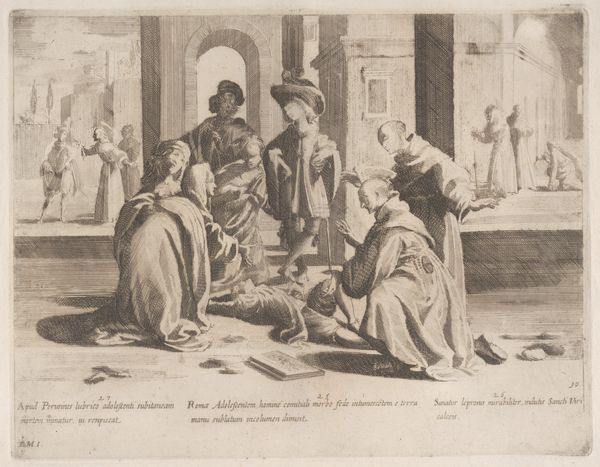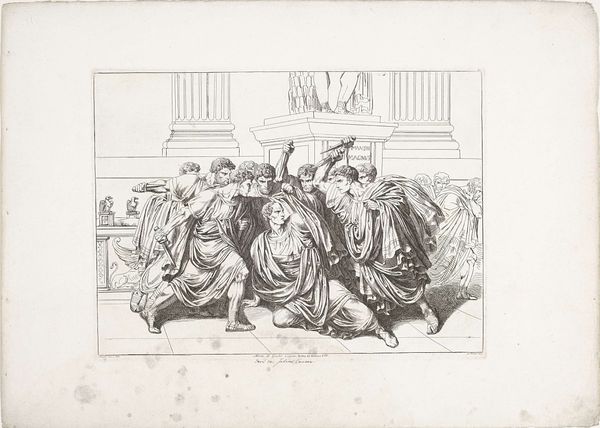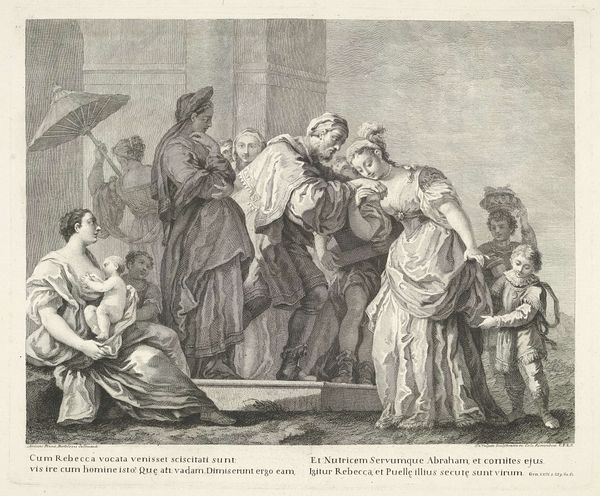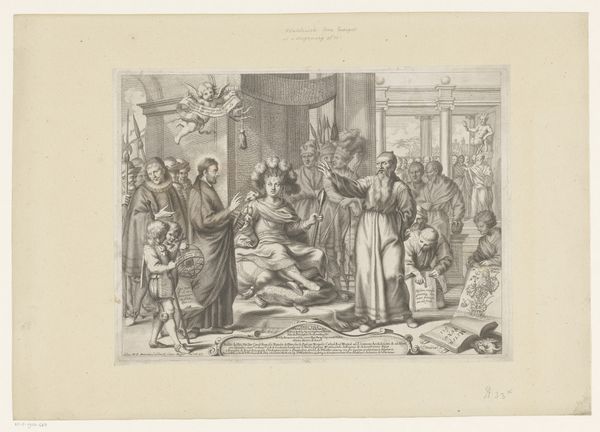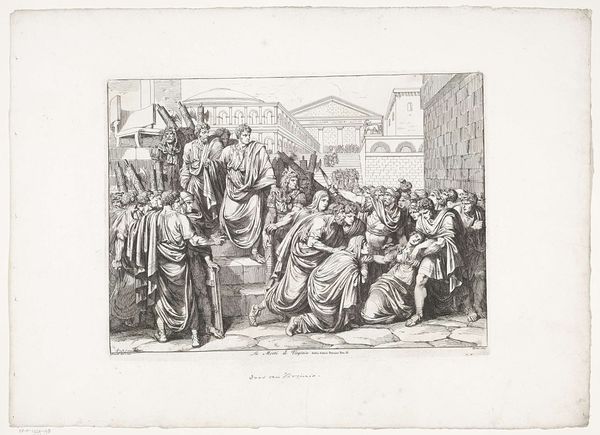
print, etching, engraving
#
narrative-art
# print
#
etching
#
old engraving style
#
figuration
#
romanticism
#
history-painting
#
academic-art
#
engraving
Dimensions: height 318 mm, width 425 mm
Copyright: Rijks Museum: Open Domain
Editor: This etching, “Coriolanus verlaat Rome en zijn treurende familie” by Bartolomeo Pinelli from 1817, has a powerful, somber atmosphere. I'm struck by how classical the figures appear, yet they're overtaken with such raw emotion. How would you interpret this scene in the context of early 19th-century art? Curator: The depiction of Coriolanus departing from Rome fits into a broader trend of Romantic artists revisiting historical and mythological narratives. However, Pinelli doesn't merely illustrate the story; he uses it to comment on the themes of civic duty versus personal desire and exile. Consider the rise of nationalism during this period and the shifting role of the citizen. Could this image be viewed as a commentary on the burden of patriotism or perhaps even the dangers of populism? Editor: That’s an interesting thought, I was really caught up on the emotion of the scene rather than considering the social factors. But isn’t this very academic? Where does the art fit in, in all this history? Curator: Precisely. And that academic approach, particularly prevalent in Neoclassical and Romantic art, was directly linked to reinforcing specific social values. The style itself communicates ideas about order, morality, and heroism. Who is this scene meant to valorise? Is it Coriolanus for putting his duty first or his family, for their genuine mourning? Editor: I see… so even the way it *looks* is a kind of political statement. It also shows how powerful visual imagery can be. Now I can understand why this piece would speak to an audience back then. It still is a powerful work to consider now. Curator: Indeed. Analyzing such historical narratives through a socio-political lens provides crucial insights into how art functions within society and the enduring power of images to shape public opinion.
Comments
No comments
Be the first to comment and join the conversation on the ultimate creative platform.
